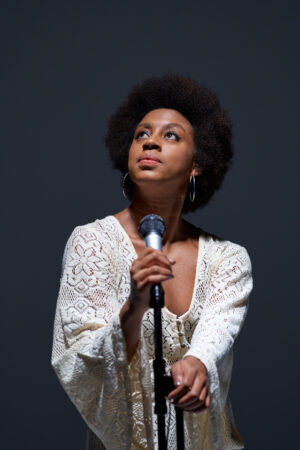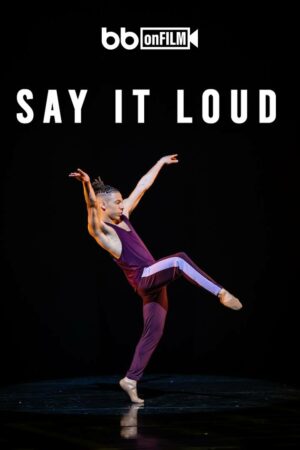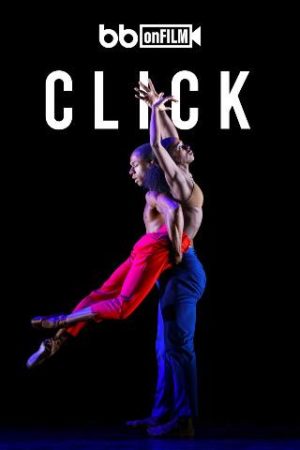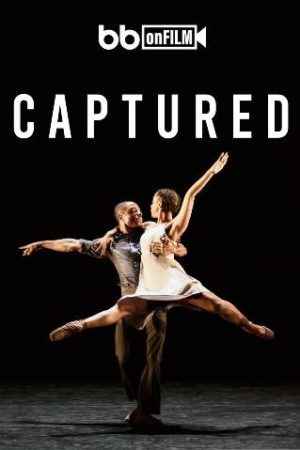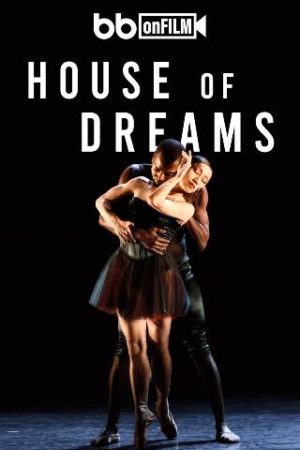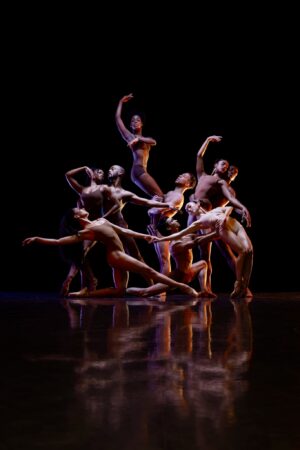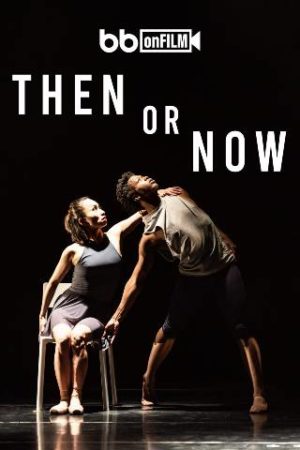Stage / Live
Welcome to our Live / Stage performance archive. Here we have collected a sample of our stage work. We hope you enjoy them.
Watch a glimpse into our new work 'NINA: By Whatever Means', which premiered at the Barbican, London in March 2023. The work is inspired by the artistry & activism of Nina Simone. November weaves a skilful picture of Simone’s turbulent and influential life to take us on an emotional and empowering journey. The two interviews recorded at right have been kindly provided to us by Afridiziak Theatre News
Choreography: William Tuckett
Lighting Design: David Plater
Costume Design: Yukiko Tsukamoto
Poetry: Adrienne Rich (1929-2012)
Director of Poetry: Fiona L Bennett
Poetry recordings: Hafsah Bashir, Natasha Gordon & Michael Shaeffer
Is it necessary for me to write obliquely about the situation? Is that what you would have me do?
Then Or Now, poetry by Adrienne Rich
Dark Fields of the Republic, Poems: 1991-1995
We are living through times where every action we take - responding to a call to arms, deciding to remain passive - has become a political act. Small or large, personal or public, our actions seem to hold more weight than before. Creating work for Ballet Black in this climate felt very different to previous collaborations; still exciting, but with great responsibility. Whose story should the dancers be telling in a time of such political and social change?
Having worked with poetry as a ‘spoken score’ for a while, I asked Fiona’s help in finding a poet whose work spoke to this narrative conundrum. On reading Adrienne Rich’s Dark Fields of The Republic, I was (and remain), overwhelmed by her ability to call the reader to action; her rejection of apathy, injustice and oppression; her reasoning that love is all – be it romantic, social or political. Specific yet open, Rich provides space for both the reader and the dancer.
In parallel, I had been listening to Daniel’s recording of the Von Biber Passacaglia, and thinking its ‘slippy’ structure, which makes it feel in the moment and improvised, would be wonderful to create to. Daniel later revealed that Biber did indeed intend the player to be actively involved in the piece; to improvise and bring themselves to it as an artist.
Finally, combining the poems, Daniel, and the voices of Natasha, Hafsah and Michael, our sound engineer Ian created a structure and soundtrack, that enabled me to make this piece with Yuki and David.
I remain immensely grateful to this hugely creative, creative team, Ballet Black, and particularly the Adrienne Rich Estate for their wholehearted support of this project.
Will Tuckett
From the Director of Poetry
We go to poetry because we believe it has something to do with us. We also go to poetry to experience the not me, enter a field of vision we could not otherwise apprehend… Someone writing a poem believes in, depends on, a delicate vibrating range of difference, that an ‘I’ can become a ‘we’ without extinguishing others, that a partly common language exists to which strangers can bring their own heartbeat, memories, images. A language that itself has learned from the heartbeat, memories, images of strangers.
Adrienne Rich, from What is Found There, Notebooks On Poetry And Politics, 1994
Adrienne Rich is one of the greatest modern poets of our time. She was born in Baltimore USA in May 1929 and during her lifetime published over 20 volumes of poetry and 8 books of non-fiction prose. A scholar, activist and a writer whose work established new forms, she received numerous awards, fellowships and prizes including The National Book Award and The Lannan Foundation Lifetime Achievement Award. She was a tireless activist and ambassador for human rights olarly and artistic integrity make her a highly relevant and vital source of inspiration for our time. She died in 2012 and her legacy is a defining force in the ongoing development of poetry.
When Will invited me to suggest poetry for a new piece with Ballet Black to explore ideas of belonging and home we began looking for poems that would serve this theme and that would also offer an exciting balance of sound, image and story through which to create. We considered the works of many poets, past and present, and exchanged poems over a number of weeks. When I sent Will, What Kind of Times Are These? the opening poem from Dark Fields of the Republic, the question in this title and the sequence of poems as a whole, resonated so strongly with us that we knew we had found our source. As Will began work with the dancers and the collaboration between music, poetry and dance began, these astonishing poems, with their unique balance of tender intimacy and epic provocation, guided, challenged and inspired us all.
Dark Fields of the Republic is published by W. W. Norton and is available to purchase at www.wwnorton.co.uk. You can find out more about the life and work of Adrienne Rich through the Adrienne Rich Literary Trust: adriennerich.net
Fiona L Bennett Director of Poetry, Then Or Now.
It is so incredible to have this opportunity to make my second touring work for Ballet Black. This year’s piece took a couple of different turns to get to where it is today, as the subject got quite complicated and created many challenges. Which was, for me, very exciting. The Waiting Game is inspired by one of the key figures of Theatre of the Absurd, Samuel Beckett. It explores the Absurdism of existence and the passing of the time through movement. The uncertainty of what tomorrow will bring; how thoughts can change rapidly, confusing us. Is life just a big simulation? A game? Do we know the rules, or are we all searching for purpose? If life is a game, are we players or spectators? Is time just a constant reminder that there will be a tomorrow?
This concept is fascinating to me as an artist, and I really wanted to find a way to bring this idea to life. I decided to take on the challenge of creating an original score for the first movement of the piece. The process of creating this element of the ballet really helped me to understand what I was trying to achieve choreographically. I am by no means a composer or a musician, but I loved the idea of what this additional layer could bring to the way I work. Music is such a strong driving force in dance, and I have enjoyed knowing that I had room to play around with the sound. Using the dancers’ voices as part of the music is always my favourite thing, and I really wanted to expand on that idea. This year I collaborated with Nathalie Vijver, who was my drama teacher when I attended the Cape Town Academy of Performing Arts. Working with Nathalie gave me so much clarity on the themes of Absurdism, drama, writing and staging a theatrical work like The Waiting Game. The title of the piece on its own is quite interesting to me, in the sense that a person can find themselves in a situation where everything is presented to them, but they can choose to make their move at a later stage. This title led us to write a piece that is both complex yet simple, deep, confusing and fun. It’s about the exploration of the scrambling of thoughts that sometimes don’t lead us anywhere, when all the while, time continues to pass us by.
The Ballet Black team and I spent a lot of time trying to figure out how this would be best communicated through movement and dance. The most amazing thing about being both a dancer and choreographer in the Company is the constant communication we are able to have, and the idea of building something much greater than ourselves. Thank you to Cassa and the dancers for creating this work with me. I am very happy to share it with you.
Mthuthuzeli November
It is a non-narrative piece, illustrating that with a snap of the fingers everything can change; with this device we were able to cover a range of different styles, from the, “snap your fingers and I’ll come running,” cartoon-like duet, to the dancers’ bodies reacting to the accelerating snaps and clicks of the ending, to the tenderness of the couple who simply “click” together. During the creative process the dancers embraced the quirkiness of my vocabulary whole-heartedly, with the moves in the studio shifting from sharp and groovy to angular and disjointed, to fluid and intertwined.
When costume designer, Yann Seabra, saw the piece he immediately came up with brightly coloured jackets reflecting the snazzy, sharpness these dancers convey so well. The score for CLICK! is a combination of pre-existing music, original composition, and sound design. This is an approach I tend to use in my work in order to create different dynamics throughout the piece. From the likes of Snapping Fingers by Ken Beebe to Two Of A Kind by composer Kenny Inglis, I find using a variety of music allows me to play with the pace and intensity of the work. My finger-snapping time spent creating this piece with Ballet Black dancers was an absolute pleasure. We clicked. Sophie Laplane
Pendulum is a duet that swings between images of combat and moments of very close partnerships: a feral terrain where the dancers have the freedom to manoeuvre and interpret the material with their own voice. I created Pendulum in 2009 for Cira Robinson and former Company member, Hugo Côrtes, and until now I remember this so clearly. Cassa and I are so humbled and grateful that Cira has passed her knowledge and thoughtful teaching of the piece to a new generation of dancers. It now takes on a whole new lease of life ten years after it was made.
Originally premiering in 2009 at the Linbury Theatre at the Royal Opera House, London, Pendulum returned to the Barbican London stage in 2019.
Composer: Steve Reich (b. 1936)
Pendulum Music (8 Microphones), 1968
Used by arrangement with Universal Edition (London) Ltd.
According to reports in Elizabeth Wilson’s book, Shostakovich: A life remembered, the young composer was "fragile and nervously agile,” and indeed, Yuri Lubimov considered that “the fact that he was more vulnerable and receptive than other people was no doubt an important feature of his genius”. The seven movements in Shostakovich’s String Quartet No. 11 are all quite short, almost fragmented. Each one, for me, has its own emotion, structure and story, except for the last one, which is a combination of the previous movements. There are real moments of restriction and tension within the choreography and music, which tug the four dancers through the space. The detail and the intricacy capture them in a battle for their own territory. It was really exciting to revisit Captured again, five years after its creation in 2012. There are new dancers in the company, which has allowed me to look at the ballet with fresh eyes. I wanted to push the piece further and really define what was important: that sense of unease and the crackle of tension. I am particularly grateful to Cira Robinson, on whom the piece was originally made, for her beautiful yet sharp, dynamic and ferocious dancing. Also to the other dancers of Ballet Black for bringing new life to Captured, at the same time as building on what was created in 2012.

